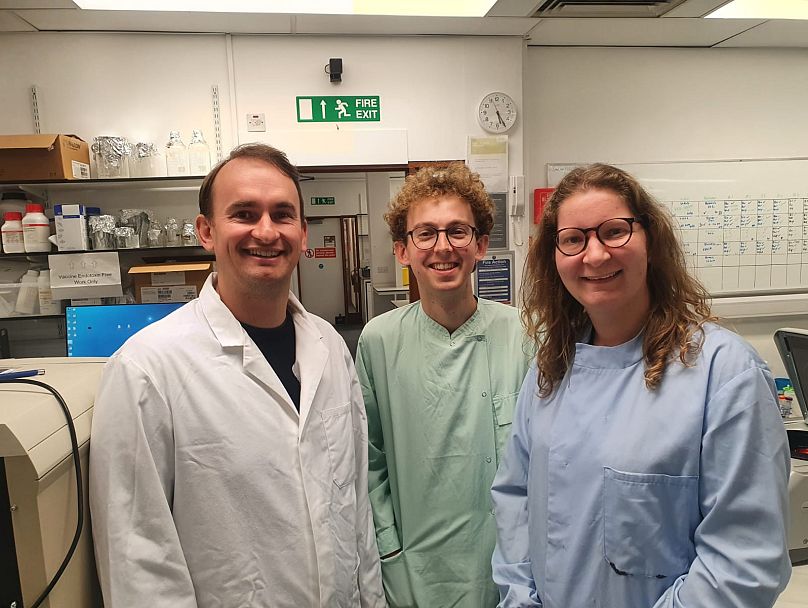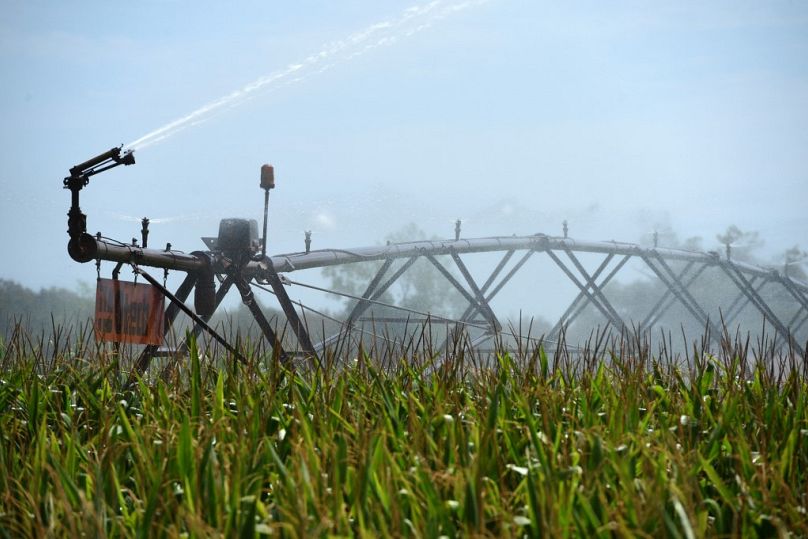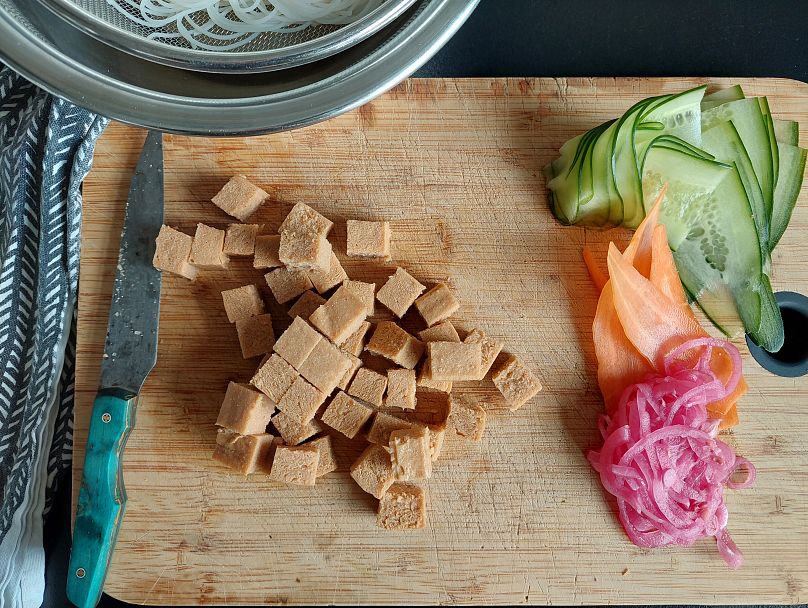Scientists, food manufacturers, investors, NGOs and governments are applying new inventions and innovations to shape what will be on our plates tomorrow.
When technology expert Ben Wilding wanted a name for his sustainable cooking oil company, he thought hard about why the company’s mission was so important.
They named it Sun Bear Bioworks after the world’s smallest bear, an animal endangered by deforestation because of palm oil plantations.
“We wanted something to keep us laser-focused on the reason we’re doing this,” Wilding explains.
“90 per cent of palm oil is produced in Malaysia and Indonesia. It has had a massive impact on biodiversity, resulting in there being fewer than 1000 sun bears left in the wild. Every time we say the name, it's a memory jog as to why we're here.”
Palm oil is a $70 billion industry (€80 billion) and is expected to grow to $100 billion (€114 billion) by 2030. Wilding believes that in many ways palm oil is a superfood.
“It needs a lot less land than other oils such as olive. It is in over 200 products. It is odourless, tasteless and is semi-solid so can be made into margarine or refined for frying and salads,” he says.
“Our replacement can be made from waste products such as potato peelings from crisp manufacturing. We use precision fermentation to produce an oil with the same properties as palm oil, and gene editing to increase the amount, to make it commercially viable.”
Sun Bear’s alternative oil is at the lab stage, but the company has generated much interest and has secured funding to scale up.
It is just one of many businesses hoping to change the food system and create more sustainable options for the future.
There are currently a host of scientists, food manufacturers, investors, NGOs and governments working to make what we eat better for the planet, for human health and for animal welfare. Together they are applying new inventions and innovations to shape what will be on our plates tomorrow.
Why do food systems need to change?
There are myriad good reasons for wanting to change the food system.
Hunger, malnutrition, obesity, ill health, environmental degradation, climate change and animal abuse are just some of the issues that need to be tackled, according to a 2021 UN summit and report.
It points out that globally the food system is responsible for 20-30 per cent of global greenhouse gas emissions, and agriculture is responsible for 40 per cent of all food greenhouse gasses.
In the EU nearly 59 million tonnes of food is wasted each year, equating to roughly 127kg per household. At the same time, 2 billion people globally suffer from malnutrition.
More than a third of the children who die before the age of five suffer from undernutrition. And worldwide around 70 billion land animals are killed for food every year. Livestock takes up nearly 80 per cent of agricultural land, and around 36 per cent of crops grown worldwide are used for animal feed.
The Intergovernmental Panel on Climate Change (IPCC) has also called for a rapid transformation of the food system. The latest Synthesis Report, published in March this year, calls for sustainable healthy diets that promote individuals’ health and well-being; have low environmental pressure and impact.
Consumers too are signalling a desire to eat more sustainably too. A 2021 pan-European survey by campaign group ProVeg International found that 46 per cent of respondents have cut their meat consumption compared to a year ago. Just under 40 per cent said they plan on doing so in the future and around a third said they plan to cut their intake of dairy products in the poll.
However, consumers will need help from food producers and sellers if their choices are to make a significant impact. Those following a meat-free diet remain a minority.
In the UK, around 3 per cent of people identify as vegan and around 10 per cent as vegetarian, - that percentage is even lower in the US. A recent survey by Boston Consulting Group for the Good Food Institute found that while 80 per cent of consumers said that they care about sustainability, only 20 per cent make food decisions based on sustainability, with other factors such as taste and nutritional value largely driving their choices.
This is where science and innovation come in. By creating new food that is more sustainable but just as tasty and nutritious as traditional food, there may be a realistic chance of changing our diets for the better.
Cultivated meat: Flesh grown in a dish
Also known as cell-based or lab-grown meat, cultivated meat is real animal cells grown in a lab. The process begins with a biopsy from an animal ( who then heals and is no longer needed). In autumn 2020 the first cultivated meat products, in the form of chicken nuggets, were approved for sale in Singapore. Since then the US Food and Drugs Administration (FDA) has approved two cultivated chicken products, from GOOD Meat and UPSIDE Foods.
Cultivated meat has attracted massive investment, with venture capitalists investing at least $2 billion (€1.8 billion) over the last couple of years. Companies are moving from lab to factory, enabling them to scale up production and become commercially viable. Luckily, consumers are becoming more interested in lab-grown meat, with a recent survey finding that 80 per cent of people in the UK and the US are open to eating it.
As for the climate benefits, there are many advantages of making meat in a factory instead of a field. Livestock takes up nearly 80 per cent of global agricultural land, yet produces less than 20 per cent of the world's supply of calories.
15.4 per cent of global greenhouse gas emissions come from animal agriculture, similar to all transport modes (cars, trucks, trains, planes) combined.
Precision fermentation: Non-dairy cheese that tastes like the real thing
Plant-based cheese has traditionally had an image problem. The cheaper supermarket brands relied heavily on coconut oil as an ingredient, giving a noticeably different taste and nutritional content to dairy cheese.
Precision fermentation promises to change all that. The process, similar to brewing, involves growing microorganisms to produce specific ingredients, in this case, dairy proteins whey and casein.
The resulting food will be biologically identical to real dairy with the same taste, texture and nutritional content. It will have the same allergens.
Precision fermented foods are already available in the US, where Perfect Day produces ice cream, cream cheese and protein powder with vegan whey protein. German brand Formo will be launching a range of precision fermentation cheeses in Europe in 2023.
3D-printed meat: Can it win over the carnivores?
Until recently plant-based meat was limited to small chunks, nuggets or mince. But thanks to new 3D printing technology there are now realistic whole cuts and steaks on the market.
Israeli company Redefine Meat spent years studying the tissue structure of animal flesh. Their research led to the creation of juicy steaks with a marbled appearance, umami blood-like flavour and chewy fibrous texture. The ingredients are a secret blend of proteins and vegetables including soy, pea and beetroot.
The product is aimed squarely at meat lovers and is sold in places where you might not expect to find a meat-free option, such as steak houses and butcher shops.
New protein: Moving on from tofu
When you think about plant-based protein and soya is usually the first ingredient that comes to mind. Its mouldability makes it ideal for tofu and tempeh. But it’s also a common ingredient in meat substitutes such as plant-based chicken pieces.
Scientists and chefs are experimenting with other sources of protein - especially ones that can be grown closer to home. For example, UK food tech company SPG Innovation, has formed a brand called Rootiful and created a tofu-like substance called New-fu that can be formed into cubes, out of locally grown lentils, pulses and quinoa.
Fermented fava beans (or broad beans as they’re called in the UK) are the main ingredient in Muu plant-based ready meals from the Finnish company Meeat.
Plant-based milk: Potatoes, chickpeas and melon seeds
For those wanting to avoid dairy milk, soy, almond, rice and oats are now familiar to European shoppers. But companies around the continent are experimenting with other ingredients to make the white stuff.
Danish vegan brand Naturli makes everything from plant-based mince to ice cream. There are also some new arrivals on the market. Dug Potato milk might not sound appetising but is surprisingly creamy in coffee.
Likewise chickpea milk, made by Yofi, has a reassuringly neutral flavour with no hint of hummus.
Spanish brand Vacka has gone a stage further and successfully made a creamy cheese out of fermented melon seed milk and olive oil, hugely reducing land and water usage, and saturated fat content.






